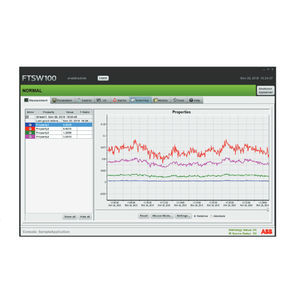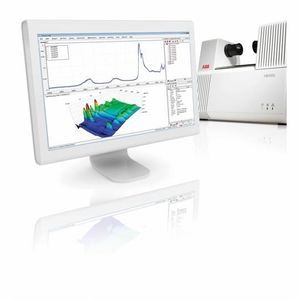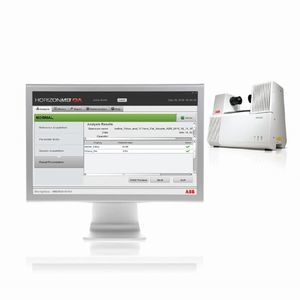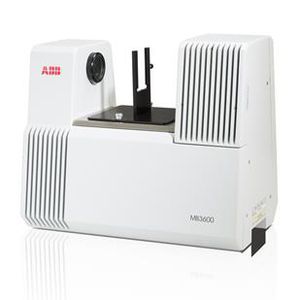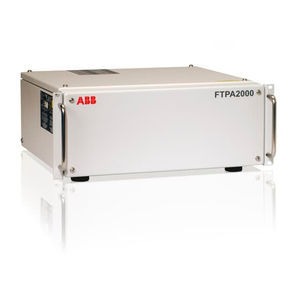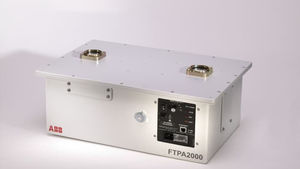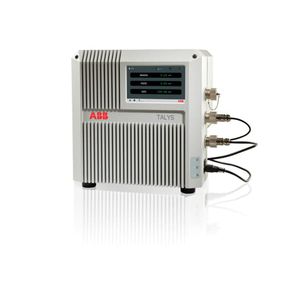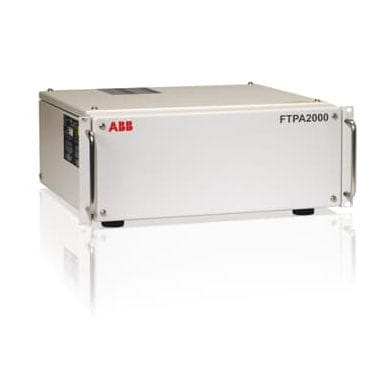
- Metrology - Laboratory
- Analytical Instrumentation
- FT-NIR spectrometer
- ABB Measurement & Analytics
- Company
- Products
- Catalogs
- Projects
- News & Trends
- Exhibitions
Optical spectrometer FTPA2000-260fiber opticnear-infraredFT-NIR
Add to favorites
Compare this product
Characteristics
- Type
- optical, fiber optic, near-infrared, FT-NIR
- Domain
- process, monitoring, industrial, pharmaceutical, OEM, chemical
- Other characteristics
- real-time
Description
ABB’s FTPA2000-260 is a multi-point, FT-NIR analyzer designed for remote, real-time monitoring of continuous and batch processes.
Profitability, quality and reliability are some of the challenges the process industry must cope with on a day-to-day basis. Precise and reliable on-line follow up of the on-line process is key to the success of modern industrial plants.
This Fourier Transform Process Analyzers (FTPA) is used in many different applications:
Semiconductor
Pharmaceutical and Life Sciences
Fine Chemical and Specialty Chemical
Commodity Chemical
Original Equipment Manufacturer (OEM)
Real-time monitoring of chemical composition and physical properties is the key providing tight control of industrial processes.
Higher yields
Higher throughput
Improved quality or your analysis
Near-infrared (NIR) portion of the electromagnetic spectrum (800 to 2500 nm)
Quantitative analysis of organic compounds
Quantitative analysis of inorganic aqueous solutions and salts.
Flexible Sitting
Flexible Sampling
Flexible Multi-detector module
Flexible communication
The FTPA2000-260 offers the best repeatability performance on the market: precise and reliable data is therefore acquired for optimal control of the process. Our spectrometers provide information needed for process optimization in the refining, chemical, pharmaceutical, semiconductor and other industries and the FTPA2000-260 is the right tool achieve your goals.
Catalogs
FTPA2000-HP260
4 Pages
Other ABB Measurement & Analytics products
FT-IR and FT-NIR Analyzers
Related Searches
- ABB gas analyzer
- ABB concentration analyzer
- ABB monitoring analyzer
- ABB liquids analyzer
- ABB benchtop analyzer
- ABB automatic analyzer
- ABB solids analyzer
- Spectrometer
- Gas detector
- ABB process analyzer
- ABB portable analyzer
- ABB continuous analyzer
- ABB integration analyzer
- ABB water analyzer
- ABB real-time analyzer
- ABB compact analyzer
- ABB oxygen analyzer
- ABB laboratory analyzer
- Digital analyser
- ABB infrared analyzer
*Prices are pre-tax. They exclude delivery charges and customs duties and do not include additional charges for installation or activation options. Prices are indicative only and may vary by country, with changes to the cost of raw materials and exchange rates.



